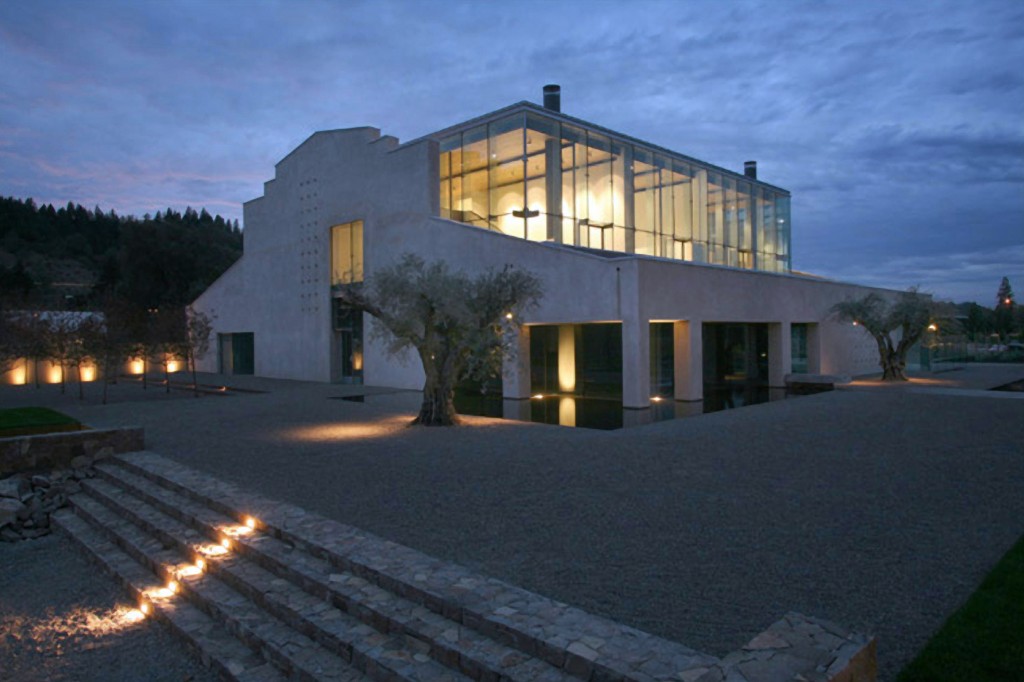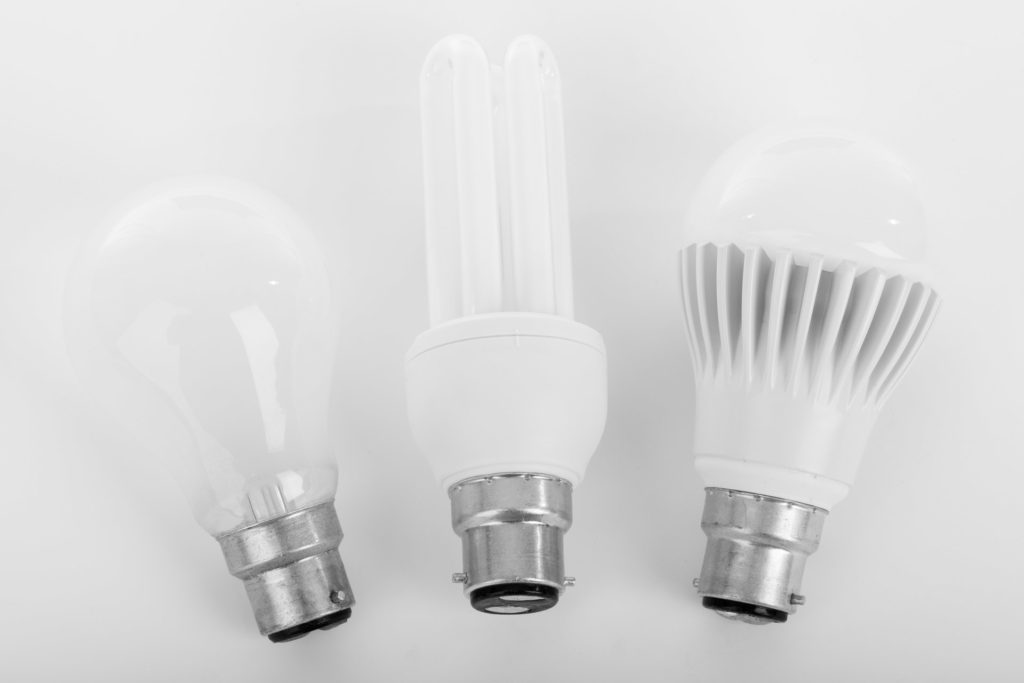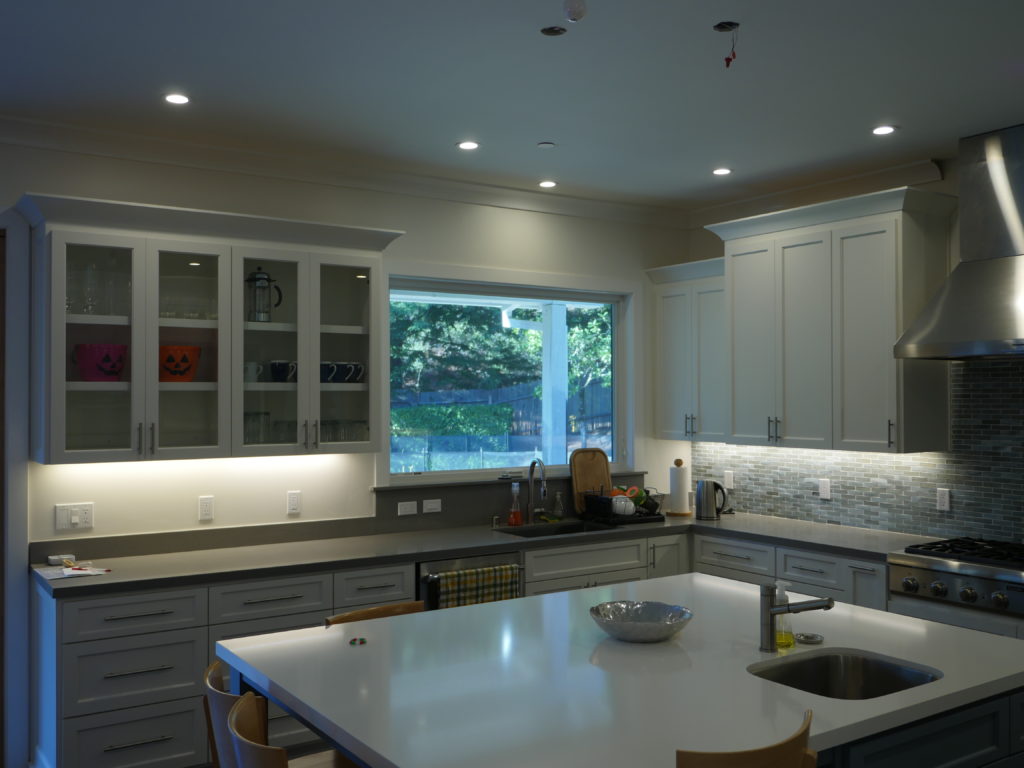
When upgrading your interior lighting, a carefully considered design can help you achieve the desired effect. Photo: American Ratings Corporation ©2019
Interior lighting design isn’t as simple as it might seem. It’s not just about maximizing visibility—it’s also about creating the right ambience, optimizing functionality and lowering energy costs. Whether you’re remodeling your home or you just want to make a few upgrades, a carefully considered design can help you make the most of your interior lighting. Here are a few tips:
Provide light at all levels
One mistake homeowners sometimes make with interior lighting design is over-relying on overhead lighting. This is usually because they want to eliminate lamps and other ancillary light sources. However, this approach fails to recognize the functional and aesthetic roles these light sources play in the home. Just try reading a book aided only by overhead lighting—you’ll soon wish you had a lamp closer to eye level. And if you think overhead lighting can provide the same inviting feel as a decorative lamp or chandelier, think again.
The truth is that the best interior lighting designs provide light at all levels from a variety of sources. Ideally, you should seek to achieve a trifecta of ambient lighting (overhead lights), task lighting (table lamps/lighting for kitchen food prep areas) and accent lighting (lights that highlight artwork or ornamental plants). In addition, consider adding lighting to shelving, cabinets and organizational areas—the increased visibility can make these spaces more functional and accessible.

Choosing the right light bulb can be a surprisingly complex undertaking.
Choose the right bulb
Shopping for light bulbs can be a surprisingly complex and frustrating endeavor. Not only are there several types of bulbs to choose from, there are many technical parameters to account for. Fortunately, by learning a little bit about these variables, you can get a better idea of which bulb is right for the application.
Brightness
Bulb brightness is measured in lumens. As energy-efficient bulbs like LEDs and CFLs supplant traditional incandescent bulbs, lumens have virtually replaced watts as the new parameter for measuring a light bulb’s power. If you’re used to measuring by watts, refer to a watts-to-lumens conversion table to help you choose the right bulb.
Color temperature
A bulb’s color temperature determines the quality of its light, which ranges from warm to cool. This is measured using the Kelvin scale; you’ll find it on the bulb’s label denoted by a number rating followed by the letter K. The higher the Kelvin rating, the warmer the bulb’s color temperature. Most standard interior light bulbs are 2700K, but you’ll get a more pleasing effect by choosing one in the 3000K-3200K range.
Color rendering
Whereas the Kelvin scale measures a light bulb’s color temperature, the color rendering index (CRI) measures a bulb’s accuracy in rendering color. This scale runs from zero to 100, with 100 representing optimum quality. A bulb’s CRI rating can also be found on the label, usually next to the Kelvin rating. Most standard bulbs have a CRI rating of 70, but you should invest in a bulb with a CRI rating of 85-95.
Light bulb style
A few decades ago, if you needed to replace an interior light bulb, you were pretty much limited to incandescent. Today, there many more options to choose from, many of which offer improved performance and energy savings. These include halogen, compact fluorescent (CFL) and light-emitting diode (LED). Halogen is known for its superior light quality, while CFLs and LEDs are designed for long life and low energy consumption.
These aren’t the only types of bulbs available. If you have a home automation system (more on this below), you may have heard of “smart bulbs” that can be dimmed or brightened via remote devices. Also, if you have a three-way lamp (lamps that allow for three sequential brightness levels), you’ll need to choose bulbs that are compatible with that function. Learn more about the different types of light bulbs.
Overall, by accounting for bulb brightness, color temperature and rendering, and style, you’ll be able to pick the perfect bulb for every part of your home.
Optimize functionality
When redesigning their interior lighting, most homeowners are understandably focused on improving quality of light. However, few consider their options for improving their lighting systems’ functionality. By increasing ease of operation and minimizing energy usage, products like timers, dimmers and motion sensors help you to get more out of your interior lighting system. Will Phinney of Reyff Electric, Inc. explains the practical benefits of these add-ons in more detail:
- Timers. Timers help reduce energy waste in restrooms and other areas where the lights or fans can get left on. A timer can be set to switch off power within a span of anywhere from five minutes to four hours. You can also install timers for controlling your exterior lights and receptacles.
- Motion sensors. Similar to timers, motion sensors help minimize energy waste by triggering lights to turn on or off depending on whether a room is occupied.
- Dimmer switches. Whereas traditional light switches only have two settings (on and off), dimmer switches allow you to control variables like light level and ceiling fan speed. That way, you can always achieve a setting that makes you the most comfortable.

Home automation technology can make for more sophisticated lighting operation in your home. Photo: AC Electric ©2019
A step further: Automating your interior lighting
As the technology becomes both increasingly sophisticated and affordable, more homeowners are taking advantage of home automation. One of the central applications of automation is lighting control, which includes the ability to operate lights throughout the home from a tablet or smartphone app. While this can be achieved through a store-bought smart hub, homeowners also have the option of a professionally installed automation system, which allows for a more customized level of lighting control. One example of this is scene-based lighting. Instead of turning on individual lights, you can choose from a list of “scenes” that are programmed to specific settings for particular activities.
Michael Martins of AC Electric explains how this might look in practice. “Say you’re going to cook dinner. You’d hit the ‘Cook’ button on your smart tablet, which would turn on the lights over your sink and counters to create a scene that’s optimal for food preparation. When you’re done cooking and it’s time to eat, press the ‘Dine’ button and the lights will readjust to the setting programmed for dining ambience. You can also create settings for entertaining, reading or watching movies. Basically, instead of fiddling with switches to find the right combination of lights, automation allows you to set the perfect scene with the touch of a button.”
Find a Diamond Certified company that can help you with your interior lighting needs
